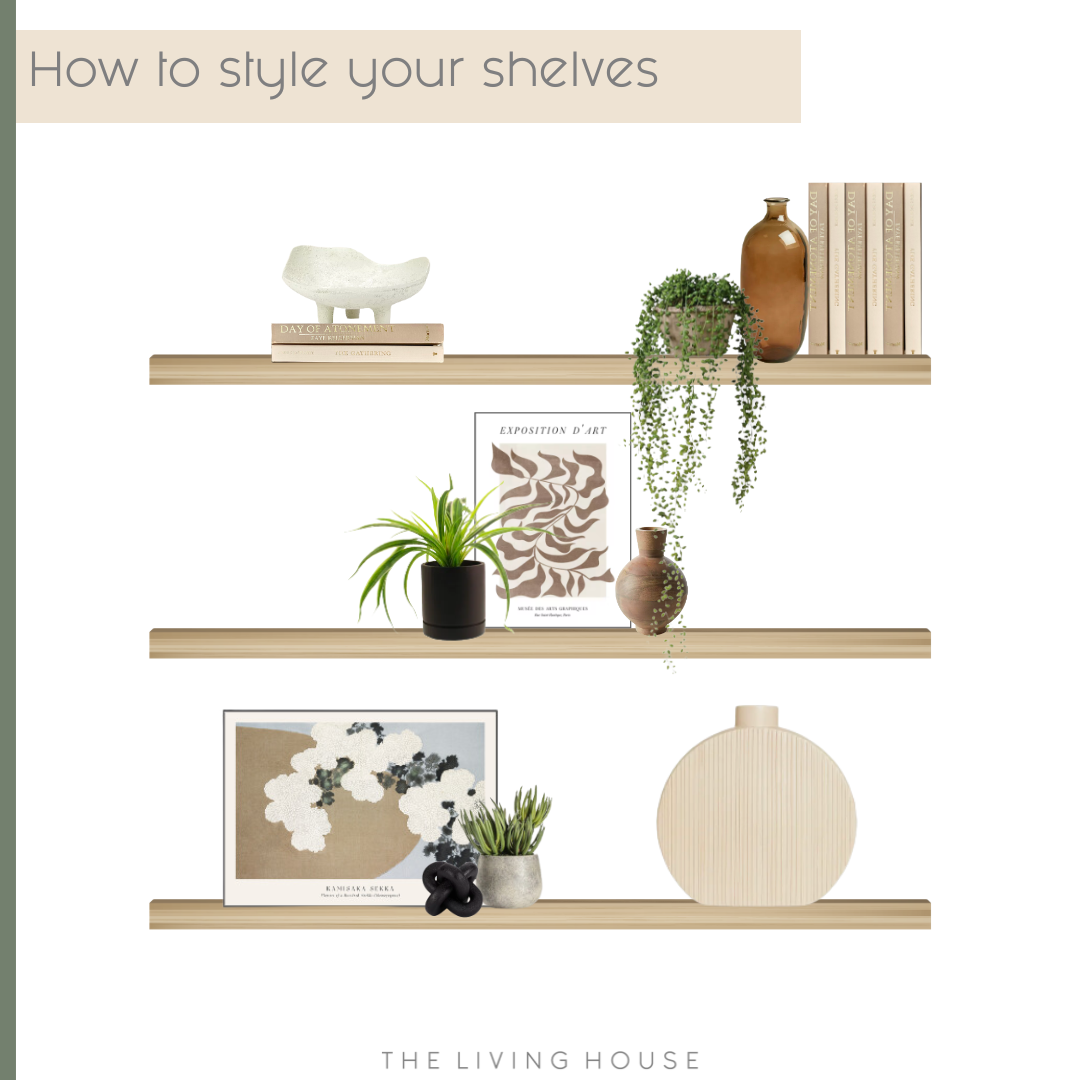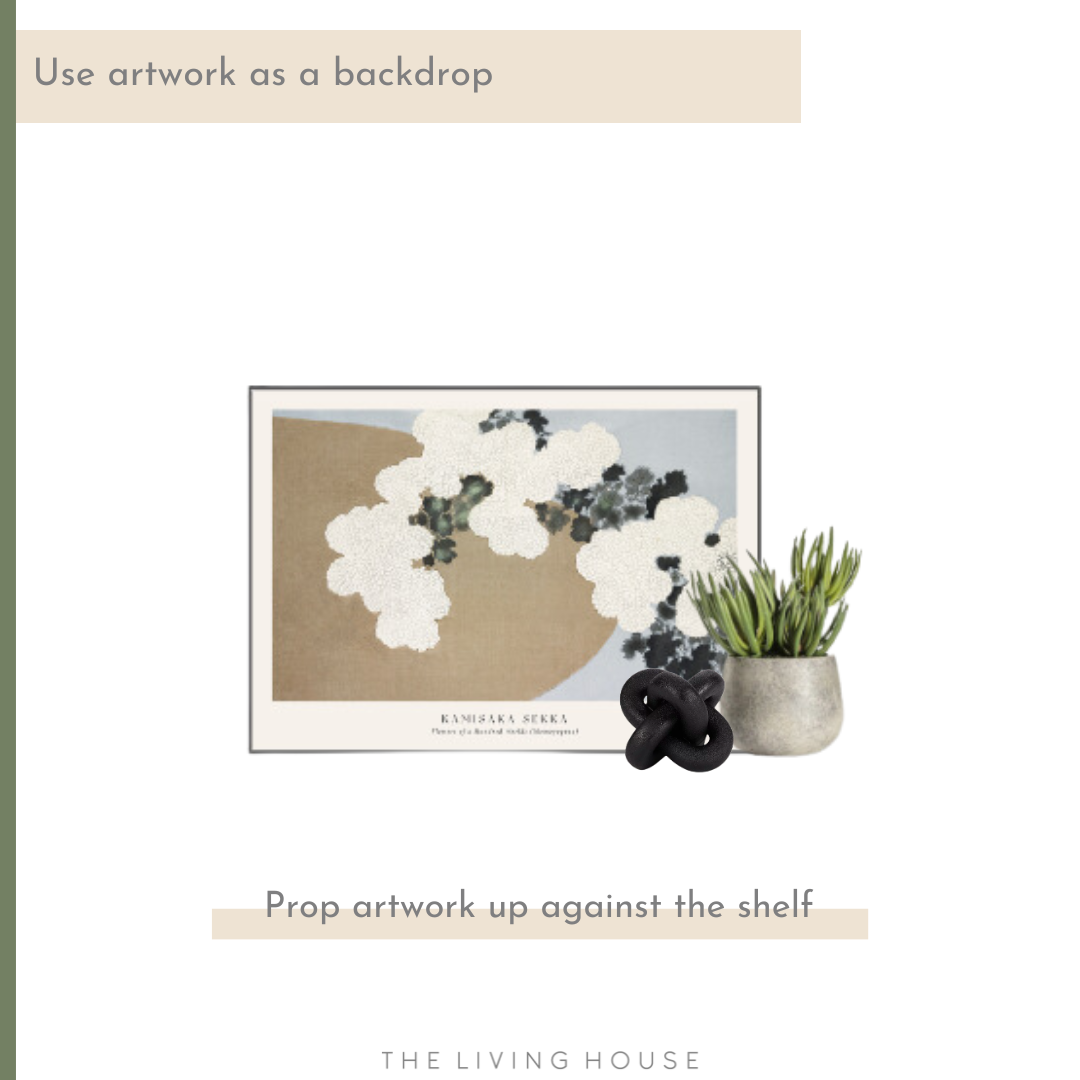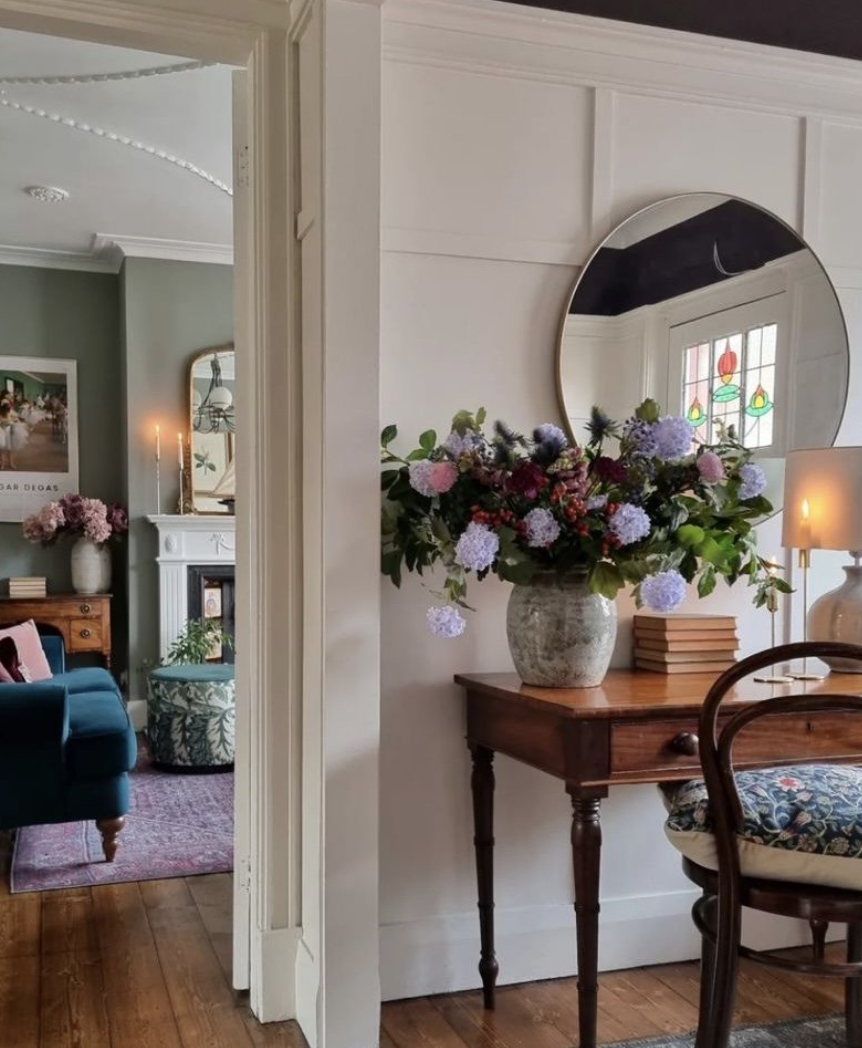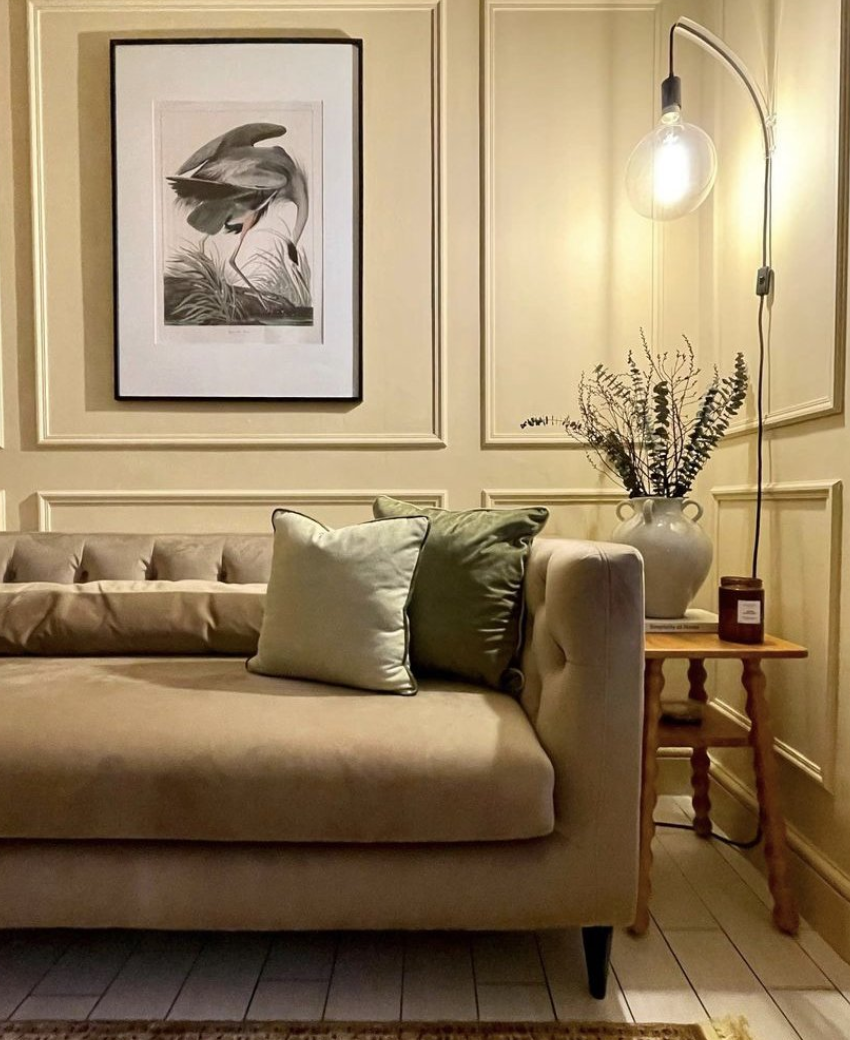How to style your shelves - 7 interior design top tips
Written by Sophie Clemson
Beautifully styled shelves can look like a work of art when styled correctly. You may scroll through Instagram and Pinterest feeling inspired, but you don't know where to start with making your own shelves look like the dreamy inspiration you’ve seen. Between the three of us at The Living House, we have over 30 years of experience and top tips we can share with you to help you style your shelves. We’ve broken down our shelf styling tips to make it easy for you to style swoon-worthy shelves in your home.
Negative space is key
Use the rule of three and group accessories together
Stack the books to add height
Add greenery with plants
Show your personality and display special memories
Use artwork for a backdrop
Add layers of lighting
1. Negative space is key
When it comes to styling your shelves, you need to make sure you don't overfill them. It can be easily done because you think you need to throw everything at them, but negative space is key. If you overfill the shelves with too many accessories, it could result in it looking like a bit of a shop display, which isn’t the look you want to go for to create a homely feel. Always think less is more.
2. Use the rule of three and group accessories together
The rule of three is our most important top tip. Group your items together using different heights, shapes, and textures. If every piece is the same height and shape, it will become quite flat, and it won't draw your eye up. Visualise a triangle when grouping your accessories together for the rule of three. You will have a tall piece, such as a vase, in the middle with two smaller pieces on either side. Using the rule of three will create a well-styled look.
Have a chat with us and find out how we can help you. Book a discovery call with us today!
3. Stack the books to add height
Books will be your friend when it comes to styling your shelves. One, they're affordable, you could pick some up in a charity shop. They don’t have to be brand new, vintage style books will add a transitional vibe, mixing the old with the new. They can be a great space filler if you’re running low on accessories. Books are great to lean up against the shelf and place an accessory up against them to act as a bookend (a trailing plant always looks good!). Books don't just need to be leaning up against the shelf, they also work brilliantly to add height. For smaller pieces that you want to feature on your shelves, stack a couple of books on top of each other and display your accessory on top.
4. Add greenery with plants
We love plants at The Living House, and we believe your shelves aren’t complete without a few! They'll add greenery and a fresh look. We recommend trailing plants, as they'll draw your eye up and down the shelves. Trailing plants are a great space filler, and if long enough, they will fill some negative space if your shelves are looking a little bare in places. (Remember our first point, though, and still leave some negative space.) Before opting for all real plants, you may need to consider artificial plants. There are some plants that need to be in a sunny spot, so check this out beforehand. In this case, artificial plants are a great alternative. There are some amazing, realistic plants on the market now.
Do you struggle to visualise how your room could look? We can help you, click here.
5. Show your personality and display special memories
Don’t feel that you need that trending vase you've seen all over Instagram; that is the biggest thing right now. Your home should be filled with memories. Use pieces that are special to you. It might be a place where you went on holiday and picked up a souvenir, an interesting postcard that you could frame, or a small vase to group with some larger pieces. Every time you look at your shelves, it will remind you of happy memories of your favourite travels or a meaningful gift you’ve received from a friend.
6. Use artwork for a backdrop
Use artwork as a backdrop behind your accessories. Simply prop up a framed art at the back of the shelves and add a couple of accessories either side. Spread the larger pieces of artwork out, for example a larger piece at the bottom to create balance and a smaller print on a high shelf. Before you buy any artwork, always measure the size of your shelf because you want some clear space above so it doesn't look like it's cramped or squeezed into the space. Another tip is to layer a couple of prints together, you can mix up the sizes and frames. Simply lean the frames up against one another.
7. Add layers of lighting
Lighting can add a warm glow to your shelves and layer up the lighting in your room for a warm and cosy feel. If you have built-in shelves with cupboards, add a table lamp to the top of the cupboard. If you have plug sockets in the cupboards, we recommend drilling a hole into the top of the cupboard to feed the cable through and reattaching the plug to hide any messy wire to create a seamless look. LED battery lamps are a favourite of ours and are becoming more popular. Battery lamps are a great way to add a light to the middle of your shelves (within easy reach to turn on and off!).
Now you know our 7 top tips to style your shelves, give it a go!
If you want to avoid costly design mistakes, take a look at our affordable online interior design packages to give you all the help you need, whilst avoiding the pitfalls. Whether you’re considering a full redesign or a spruce up, we can take the stress away, and give you confidence to move forward. Our online interior design packages are a flat fee and we can work to any budget large or small, saving you money along the way and ensuring you get the results you want and expect!
You might also like








